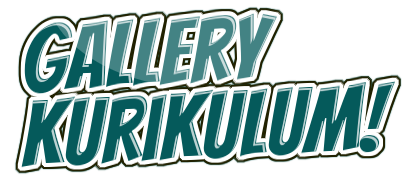Introduction
Choosing the best exterior siding for your home is a crucial decision. It not only affects your home’s curb appeal but also its durability, energy efficiency, and maintenance needs. With so many siding options available, finding the perfect fit can feel overwhelming. In this guide, we’ll break down the best exterior siding materials, their pros and cons, and how to choose the right one for your home.
Factors to Consider When Choosing Exterior Siding
Durability and Longevity
The lifespan of siding varies depending on the material. Some options, like brick and stone, can last a lifetime, while others, like vinyl, may need replacement after a few decades.
Weather Resistance
Your local climate plays a significant role in determining the best siding. Some materials handle moisture, heat, and cold better than others.
Aesthetic Appeal and Style
Siding should complement your home’s architectural design. Whether you want a traditional look or a modern style, there’s a siding option to match.
Maintenance Requirements
Some siding materials require frequent maintenance, such as painting and sealing, while others are virtually maintenance-free.
Cost and Budget
Budget plays a significant role in siding selection. While some materials are affordable, others require a larger upfront investment but offer long-term savings.
Energy Efficiency and Insulation
Certain siding materials provide better insulation, which can reduce energy bills and improve home comfort.
Environmental Impact and Sustainability
If you’re eco-conscious, consider siding made from sustainable or recycled materials.
Best Exterior Siding Materials
Vinyl Siding
Vinyl siding is one of the most popular and cost-effective options.
✅ Pros: Affordable, low maintenance, available in many colors and styles.
❌ Cons: Less durable than other materials, can crack in extreme temperatures.
Wood Siding
Wood siding provides a natural, classic look and can be customized with stains or paints.
✅ Pros: Beautiful appearance, eco-friendly, customizable.
❌ Cons: Requires regular maintenance, susceptible to termites and rot.
Types of Wood Siding:
- Clapboard: Horizontal wooden planks
- Shakes & Shingles: Textured wood for a rustic look
Fiber Cement Siding
Made from a blend of cement, sand, and cellulose fibers, fiber cement siding is a durable alternative to wood.
✅ Pros: Fire-resistant, rot-resistant, mimics wood appearance.
❌ Cons: Higher cost, heavy, requires professional installation.
Brick Siding
Brick offers a timeless, durable exterior that enhances home value.
✅ Pros: Long lifespan, minimal maintenance, fire-resistant.
❌ Cons: Expensive, labor-intensive installation.
Stone and Stone Veneer Siding
Stone siding creates a luxurious and elegant home exterior.
✅ Pros: Durable, unique aesthetic, weather-resistant.
❌ Cons: High installation cost, heavier than other materials.
Metal Siding (Aluminum and Steel)
Metal siding offers a sleek, modern look with strong durability.
✅ Pros: Resistant to fire, insects, and rot; eco-friendly.
❌ Cons: Prone to dents, can be noisy in heavy rain.
Stucco Siding
Stucco is a traditional siding option that provides excellent insulation.
✅ Pros: Fire-resistant, energy-efficient, versatile.
❌ Cons: Cracks over time, requires professional installation.
Engineered Wood Siding
A cost-effective, eco-friendly alternative to natural wood.
✅ Pros: Durable, resistant to moisture and pests, affordable.
❌ Cons: Requires maintenance, potential for water damage.
Choosing the Right Siding for Your Home
Climate Considerations
Cold climates require siding with good insulation, while humid areas need moisture-resistant materials.
Architectural Style and Design
Choose siding that complements your home’s structure. Traditional homes may look best with wood or brick, while modern designs may favor metal or fiber cement.
Installation Process and Costs
Some materials, like vinyl, are easy to install yourself, while others, like stone and stucco, need professional installation.
Long-Term Maintenance and Upkeep
Low-maintenance options like fiber cement or metal can save time and effort in the long run.
Conclusion
The best exterior siding for your home depends on your budget, climate, and aesthetic preferences. If you’re looking for an affordable, low-maintenance option, vinyl or fiber cement siding may be best. If durability and timeless appeal are your priorities, brick or stone siding is worth considering. By weighing these factors, you can make an informed decision that enhances both the beauty and longevity of your home.
FAQs
1. What is the most durable exterior siding option?
Brick and stone siding are among the most durable options, lasting for decades with minimal maintenance.
2. Which siding is the easiest to maintain?
Vinyl and fiber cement siding require the least maintenance compared to wood and stucco.
3. What is the most budget-friendly siding material?
Vinyl siding is the most affordable option, offering good durability at a lower price.
4. Can I install exterior siding myself, or should I hire a professional?
Some options, like vinyl, are DIY-friendly, while others, like stucco or stone, require professional installation.
5. How do I choose the best color for my home’s exterior siding?
Consider your home’s architecture, surrounding environment, and personal style preferences.
